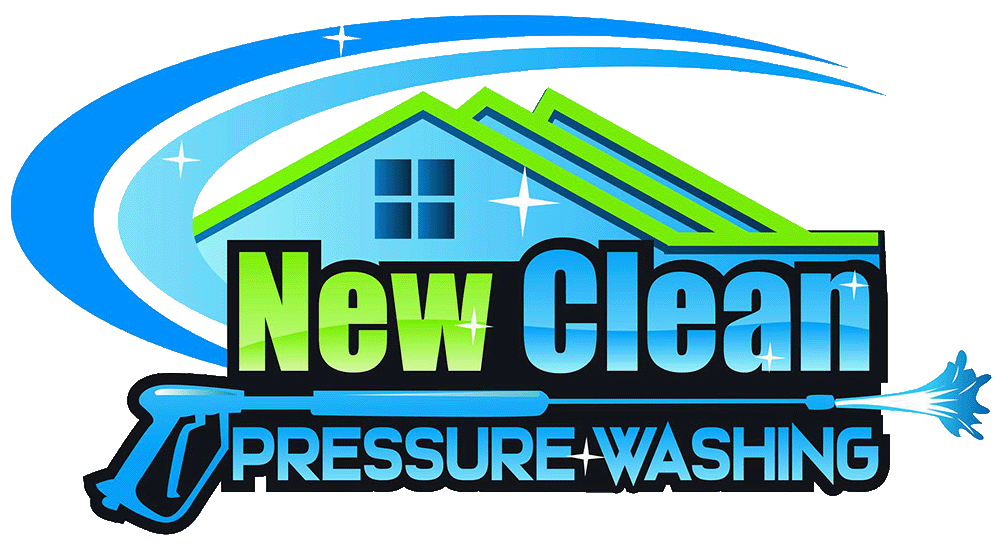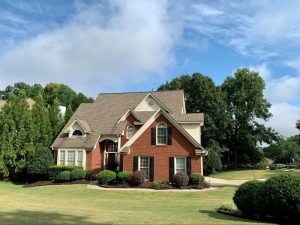Maintaining the exterior of your home is essential not only for aesthetic appeal but also for the longevity of your property. Over time, dirt, grime, mold, and mildew can accumulate on your home’s surfaces, leading to potential damage if not addressed properly. This is where house-washing techniques come into play. Understanding the different types of house washing methods is crucial in selecting the best option for your home, depending on the surface materials and the extent of cleaning needed.
Pressure Washing
Pressure washing is one of the most common and effective methods for cleaning a variety of surfaces around a home, including siding, driveways, decks, and patios. This technique involves using a high-pressure water spray to remove dirt, mold, mildew, and other contaminants from the surface.
How it works: A pressure washer machine pumps water at high pressure (measured in pounds per square inch, or PSI) through a hose and a spray nozzle. The force of the water is powerful enough to strip away layers of dirt and grime.
Best for: Pressure washing is ideal for hard surfaces such as concrete, brick, and stone. It can also be used on vinyl siding and some types of wood, but caution is required to avoid damage.
Pros:
- Highly effective in removing stubborn dirt and stains.
- Fast and efficient for large areas.
- Can be used with detergents for enhanced cleaning.
Cons:
- The high pressure can damage delicate surfaces like wood, stucco, and older paint.
- Not suitable for all types of siding, particularly softer materials like wood or fiber cement.
- Potential for water intrusion if used incorrectly, leading to mold and mildew growth.
Soft Washing
Soft washing is a gentler alternative to pressure washing that is specifically designed for more delicate surfaces. Our friends at Pumptec explain how soft washing uses a low-pressure spray combined with specially formulated cleaning solutions to break down dirt, mold, algae, and other contaminants.
How it works: Soft washing systems use pumps that apply water at a much lower pressure than traditional pressure washers. Cleaning solutions, typically including biodegradable detergents and surfactants, are applied to the surface and left to dwell for a period before being rinsed off.
Best for: Soft washing is ideal for cleaning roofs, stucco, vinyl siding, painted wood, and other delicate surfaces that could be damaged by high-pressure washing.
Pros:
- Safe for delicate surfaces, reducing the risk of damage.
- The cleaning solutions used can kill mold, mildew, and algae at the source, preventing regrowth.
- Effective for removing biological growth and preserving the integrity of your home’s exterior.
Cons:
- The cleaning process may take longer due to the dwell time of the cleaning solutions.
- Requires specific cleaning agents, which may increase the cost.
- Not as effective on heavily soiled or hard surfaces without the use of detergents.
Hand Washing
While less common for whole-house cleaning, hand washing is still a viable option for certain areas of the home, particularly those that are small, intricate, or require special attention. This method involves using a brush, sponge, or cloth along with a cleaning solution to manually scrub the surface.
How it works: Cleaning solutions are applied directly to the surface, and the area is scrubbed by hand using appropriate tools. After scrubbing, the area is rinsed off with water.
Best for: Hand washing is best for small, intricate areas like window frames, decorative trim, and surfaces that require a gentle touch. It’s also useful for spot-cleaning areas that need special attention.
Pros:
- Allows for precise cleaning in delicate or hard-to-reach areas.
- Minimizes the risk of damage to sensitive surfaces.
- Ideal for spot cleaning and areas with special materials.
Cons:
- Labor-intensive and time-consuming for larger areas.
- May not be as effective in removing heavy dirt or stains without significant effort.
- Not practical for whole-house washing due to the amount of manual labor involved.
Steam Cleaning
Steam cleaning is a method that uses high-temperature steam to clean and sanitize surfaces. This technique is less common for whole-house washing but is effective for specific situations, such as cleaning outdoor furniture, grills, and other areas that require disinfection.
How it works: A steam cleaner heats water to create steam, which is then applied to the surface through a nozzle. The heat of the steam breaks down dirt, grease, and other contaminants while killing bacteria and mold spores.
Best for: Steam cleaning is ideal for surfaces that need both cleaning and sanitizing, such as outdoor furniture, grills, and play equipment. It is also effective for cleaning areas with heavy grease or oil buildup.
Pros:
- Provides deep cleaning and sanitization without the use of harsh chemicals.
- Effective in removing grease, oil, and tough stains.
- Environmentally friendly as it primarily uses water.
Cons:
- Not suitable for all surfaces, particularly those that could be damaged by high heat.
- May require specialized equipment, which can be costly.
- Limited to smaller areas or specific cleaning tasks, not practical for whole-house washing.
Chemical Cleaning
Chemical cleaning involves using specialized cleaning agents or chemicals to remove stains, mold, algae, and other contaminants. This method is often combined with other techniques like pressure or soft washing to enhance cleaning effectiveness.
How it works: Chemicals are applied to the surface to break down or dissolve dirt and contaminants. After the chemical has had time to work, the surface is typically rinsed with water.
Best for: Chemical cleaning is ideal for removing tough stains, rust, oil, and biological growth like mold and algae. It is often used on surfaces that are difficult to clean with water alone.
Pros:
- Highly effective at removing tough stains and contaminants.
- Can be used in conjunction with other washing methods for enhanced results.
- Some chemicals are designed to inhibit the regrowth of mold and algae.
Cons:
- Some chemicals can be harsh and potentially harmful to plants, pets, and people.
- Requires careful handling and application to avoid damage to surfaces or the environment.
- May require protective equipment and proper disposal methods.
Conclusion
Choosing the right house washing technique depends on the specific needs of your home’s exterior surfaces. Pressure washing is powerful but can be damaging if not used carefully. Soft washing offers a safer option for delicate surfaces, while hand washing allows for precision cleaning in hard-to-reach areas. Steam cleaning is great for sanitizing, and chemical cleaning can tackle the toughest stains.
Understanding the pros and cons of each method will help you make an informed decision, ensuring your home remains clean, attractive, and well-maintained. Whether you’re tackling the job yourself or hiring professionals, knowing these techniques will enable you to achieve the best results while protecting your home’s exterior.


